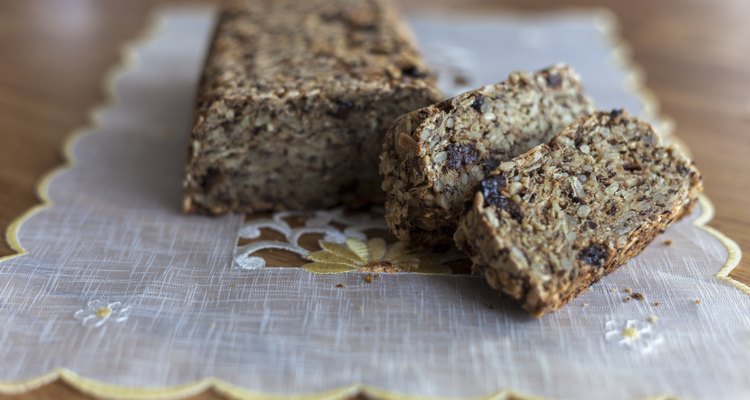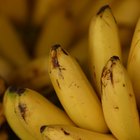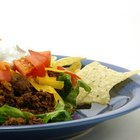
prosiaczeq/iStock/Getty Images
Gluten-free diet are used to treat symptoms due to celiac disease, personal preference or for a wheat intolerance. If you have been following a gluten free diet you likely know how difficult it can be to find conventional baking recipes that don’t call for wheat flour. Dealing with an egg allergy or vegan diet can make it harder to produce homemade bread for yourself, but there are recipes that work.
Gluten-Free Flours
Some wheat-free flours work more successfully in bread recipes than others. Potential options include sorghum flour, brown rice flour, millet flour, quinoa flour and tapioca flour. All have slightly different tastes and textures, and often a blend works better than a single type. King Arthur Flour suggests using a combination of white rice flour, brown rice flour, tapioca starch and potato starch.
Egg Substitutes
Eggs can help a loaf without wheat flour rise and develop air bubbles in the oven. However, if you’re vegan or have an egg allergy, you still have options. To replace a single egg, Food.com recommends blending 1 tbsp. of ground flaxseeds with 3 tbsp. of water. If you’re making quick bread, or bread that does not call for yeast, you can also use 1/4 cup of pureed silken tofu, 1/4 cup of applesauce, 1/4 cup of mashed banana or 3 tbsp. of mayonnaise, as long as the mayonnaise is egg-free.
Recipe
For one loaf of bread, you need 1 cup of sorghum flour, 1 cup of potato starch, 1/2 cup of millet flour, 2 tsp. of xanthan gum, 1 1/2 tsp. of salt, 2 tsp. of rapid rise yeast, 1 1/4 cups of warm water, 3 tbsp. of olive oil, 1 tbsp. of honey, 1/2 tsp. of lemon juice and a substitute of your choice for one egg. In one bowl, mix the dry ingredients, and pour the liquid ingredients on top. Mix the dough and knead it by hand, with a stand mixer and dough hook attachment or with a bread machine for five to 10 minutes or until it is silky. Cover the bowl with plastic wrap and let the bread dough rise in a warm place for one hour. Put the dough into a loaf pan, let it rise again under plastic wrap for about 45 minutes, and then bake the bread at 350 degrees Fahrenheit for 45 to 55 minutes.
Considerations
The gluten that wheat flour produces is what gives bread its light, airy structure and enables it to hold together as it rises. Without wheat flour, eggs can do some of the work, but taking them out of the equation lessens the probability that the bread will rise well and have a light texture. So, you’re likely to have better results when you use a bread recipe that was designed to be both gluten-free and egg-free instead of modifying an existing recipe for traditional wheat bread.
Related Articles

How to Make Breadmaker Bread Less Dense

Whole Wheat Pastry: Flour Substitutions

How to Make Toasted Bread Sticks With ...

How to Replace Eggs With Applesauce, ...

What Can Be Used Instead of Eggs for ...

How to Bake Bread in a Dutch Oven

How to Freeze Brioche

How to Make Bread Sticks Out of Pizza ...

How Many Calories in Gluten-Free Bread?

Can You Substitute Yogurt for Milk in ...

How to Make Bread Chewy

What Kind of Flour to Use for Cupcakes?

How to Bake Bread in a Clay Pot

How to Bread Chicken for Baking

What Can I Use in Place of Sour Cream?

How to Egg Wash a Loaf of Challah Bread

What Can I Use as an Egg Substitute ...

How to Make Dough in a KitchenAid Mixer
Flour Substitute for Muffins

How to Make Homemade Biscuits With Water
References
Writer Bio
Carly Schuna has been freelance writing and editing for more than a decade. In the lifestyle sector, her specialty areas are wellness, food/drink, and entertaining. With hundreds of recipes and nutrition-focused articles in her portfolio, Carly loves helping readers put a healthy spin on classics in the kitchen without sacrificing taste.
Photo Credits
prosiaczeq/iStock/Getty Images